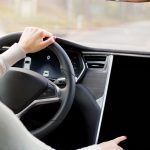Deep inside the body, technology and neuroscience intersect as Cochlear introduces its Nucleus Nexa System, marking a step forward for edge AI in medical implants. The device leverages machine learning within strict power and safety constraints, allowing real-time auditory environment recognition without relying on cloud processing. Unlike external wearables, the Nucleus Nexa Implant is designed to run for decades, store user-specific data locally, and receive over-the-air firmware upgrades. This approach not only opens possibilities for hearing assistance but also raises expectations for future implanted AI devices. As medical technology advances, patients may find their devices gain new abilities over time, simply through software updates.
Over the years, cochlear implants typically relied on fixed signal processing algorithms, offering little adaptability unless patients underwent device replacement. Earlier devices required direct physical updates or replacement for improved features, and lacked the sophistication of on-device AI or upgradeable intelligence. The Nucleus Nexa System differs by combining local processing, environmental recognition, and update mechanisms, making the implant itself adaptable and extendable. Past industry discussions about implant constraints primarily highlighted limitations in battery, latency, and firmware flexibility; now, these barriers are being addressed with edge AI techniques and careful engineering, setting a precedent for expanded patient benefit and long-term device relevance.
How does SCAN 2 classify auditory environments?
The Nucleus Nexa System functions through the SCAN 2 classifier, which processes incoming sound to identify five categories: Speech, Speech in Noise, Noise, Music, or Quiet. This classification supports adaptive sound processing, tailoring electrical signals for the user’s specific auditory context. As Jan Janssen, Chief Technology Officer at Cochlear, describes,
“These classifications are then input to a decision tree, which is a type of machine learning model. This decision is used to adjust sound processing settings for that situation, which adapts the electrical signals sent to the implant.”
The external sound processor and implant work collaboratively, optimizing both audio experience and power consumption via dynamic RF data exchange between components.
What advancements does ForwardFocus introduce in spatial hearing?
Beyond basic sound recognition, the system’s ForwardFocus algorithm uses data from two microphones to filter out background noise. By distinguishing noise from focused sound sources, ForwardFocus lessens cognitive burden for users, especially in busy environments. The algorithm determines when to enable spatial filtering based on real-time environmental analysis, removing the need for manual user adjustments. This enables users to benefit from clearer hearing in complex situations, facilitated by autonomous processing and machine learning.
Why is implant upgradeability a significant development?
One key feature is the implant’s ability to receive firmware updates, which had not been possible in traditional devices. This means audiologists can now push software enhancements directly to the implant without additional surgery, using a secure, proximity-based RF protocol. The implant also stores personalized hearing settings, ensuring continuity even if external components are replaced.
“With the smart implants, we actually keep a copy [of the user’s personalised hearing map] on the implant,”
says Janssen, emphasizing that critical personalized settings remain accessible regardless of processor changes.
Cochlear chose decision tree models for their interpretability and efficiency under tight power limits but is exploring deeper neural networks for future upgrades. The company is looking beyond audio—AI-powered automation could help routine care and data processing, assisting both patients and audiologists. Their roadmap highlights autonomous device optimization, with future iterations potentially including Bluetooth LE Audio and Auracast to connect directly to public audio streams, shaping new interactions between the device and connected environments.
The Nucleus Nexa System demonstrates how medical devices can integrate edge AI by balancing minimal energy use, real-time latency, user safety, and long-term upgradeability. This direction signals potential for broader AI deployment in medical devices—from current decision-tree classification to eventual adoption of complex models as battery and processing constraints are addressed. For patients, advances in upgradeable AI implants point toward continuous improvement in everyday life without requiring repeated surgeries. Readers considering future medical devices may want to prioritize upgradability and software-driven improvement, as these features can extend device functionality and relevance throughout a patient’s lifetime. Manufacturers following Cochlear’s example may soon bring similar upgrades to various implanted devices, benefiting broader patient groups beyond those with hearing loss.








